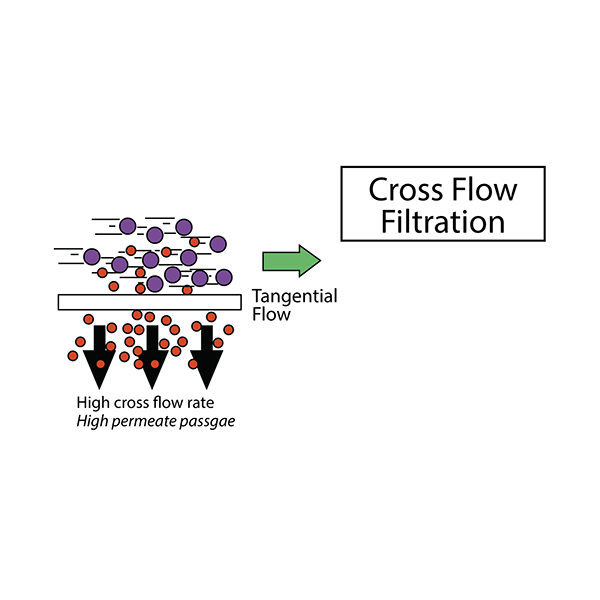
Conventional filtration is a dead-end process in which all the material to be filtered flows perpendicularly towards the filter media. Suspended solids are captured on the filter surface, which can build up, eventually slowing down the rate of filtration.
This requires the process to be stopped for the filter to be cleaned or replaced. However, in cross flow filtration, the feed stream flows parallel or tangentially to the membrane surface. Flowing at a high velocity, the feed stream constantly sweeps the membrane surface clean of accumulated solids or solutes.

Depending upon the application, the desired product can be in the permeate or in the concentrate. Only a portion of the stream, that consisting of molecules smaller in size than the membrane pores, passes through the membrane as “permeate” or “ filtrate”. The remainder of the stream, termed “concentrate” or “retentate”, contains the solutes or suspended solids which have been rejected by the membrane.
The mechanism of membrane separation is complex and is influenced by factors such as method of membrane manufacture; composition of the membrane; chemical interactions between the feed stream and the membrane; fluid dynamics of the membrane; pressure; temperature and velocity of the feed stream to the separation system.
